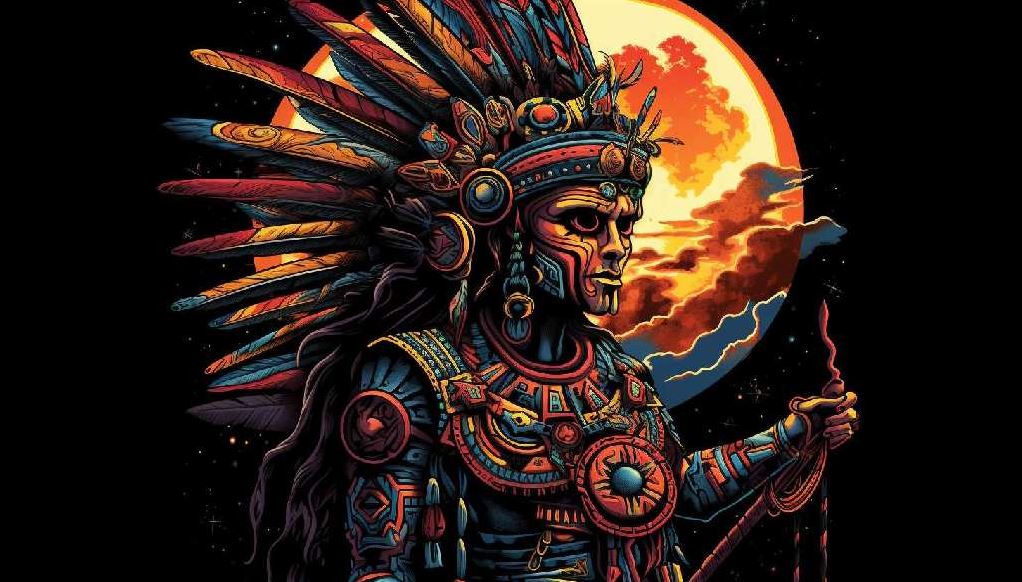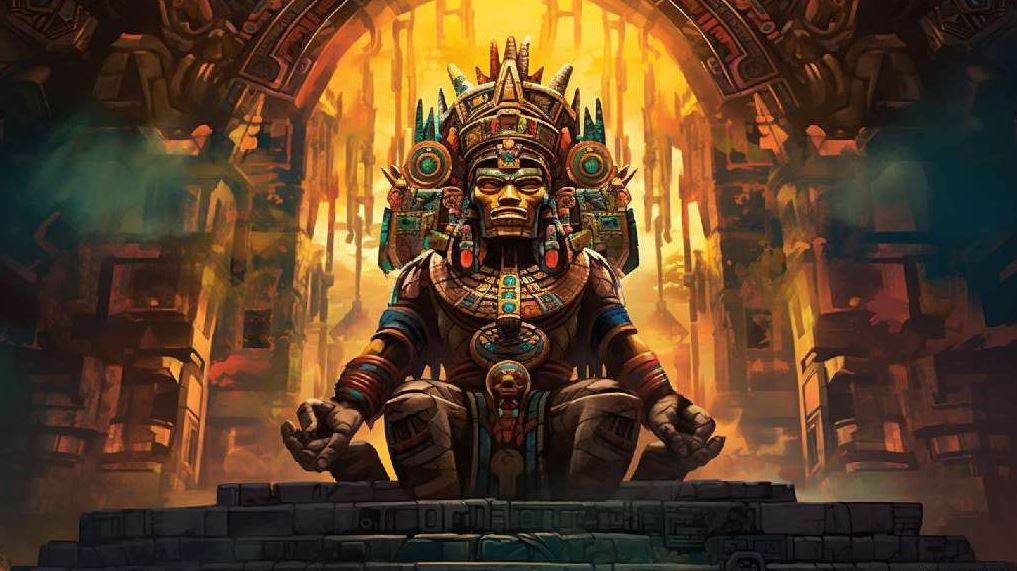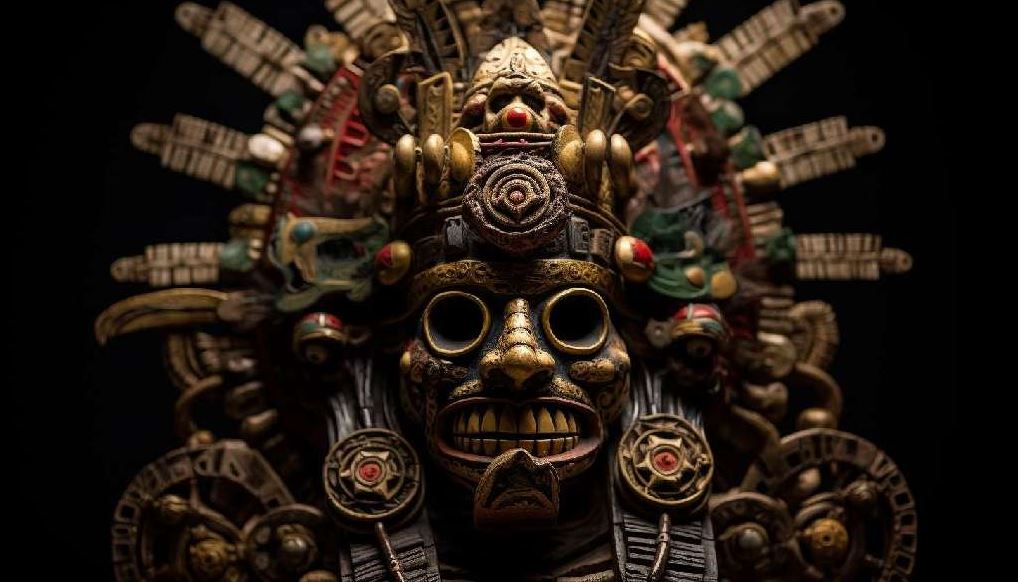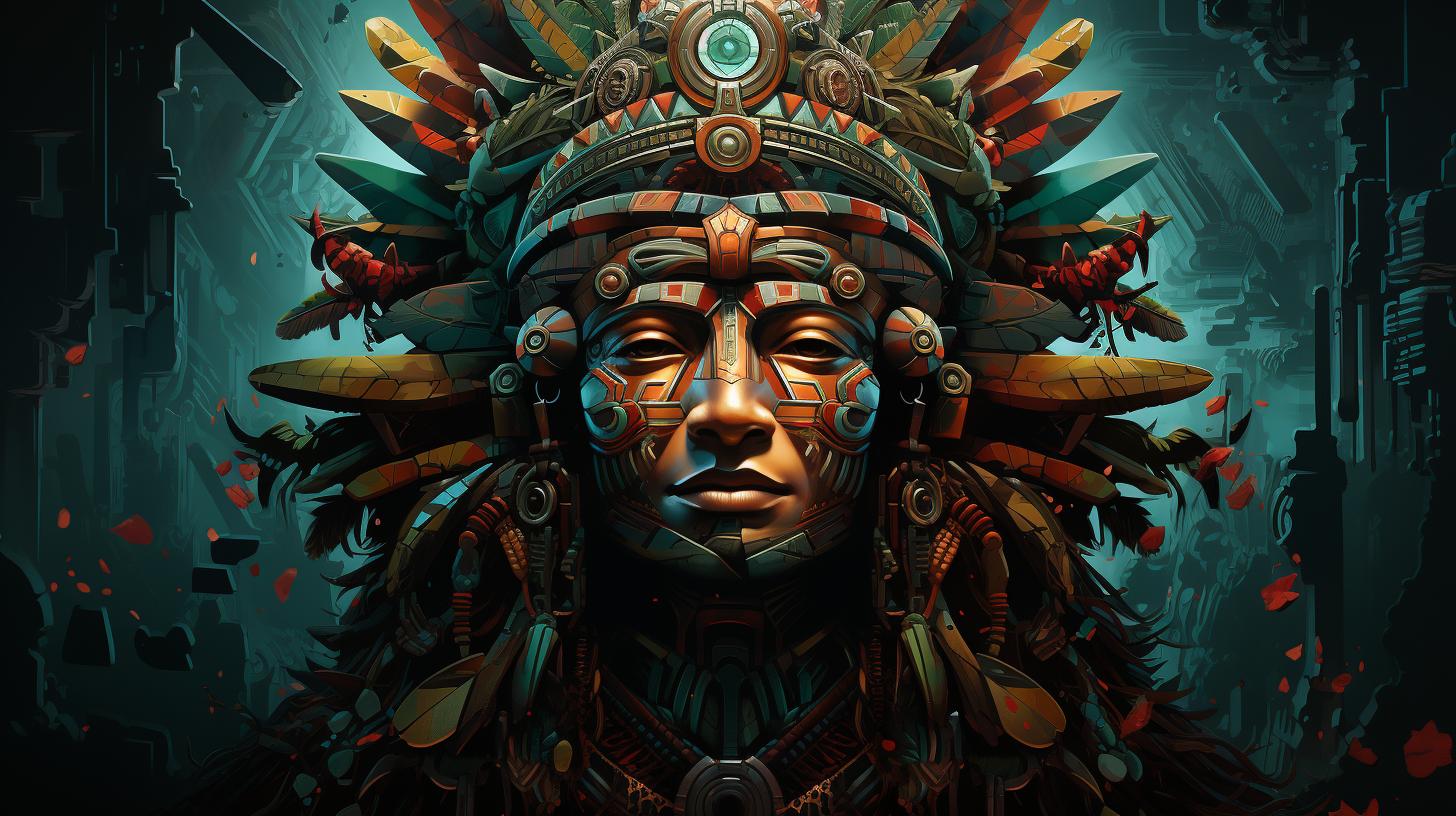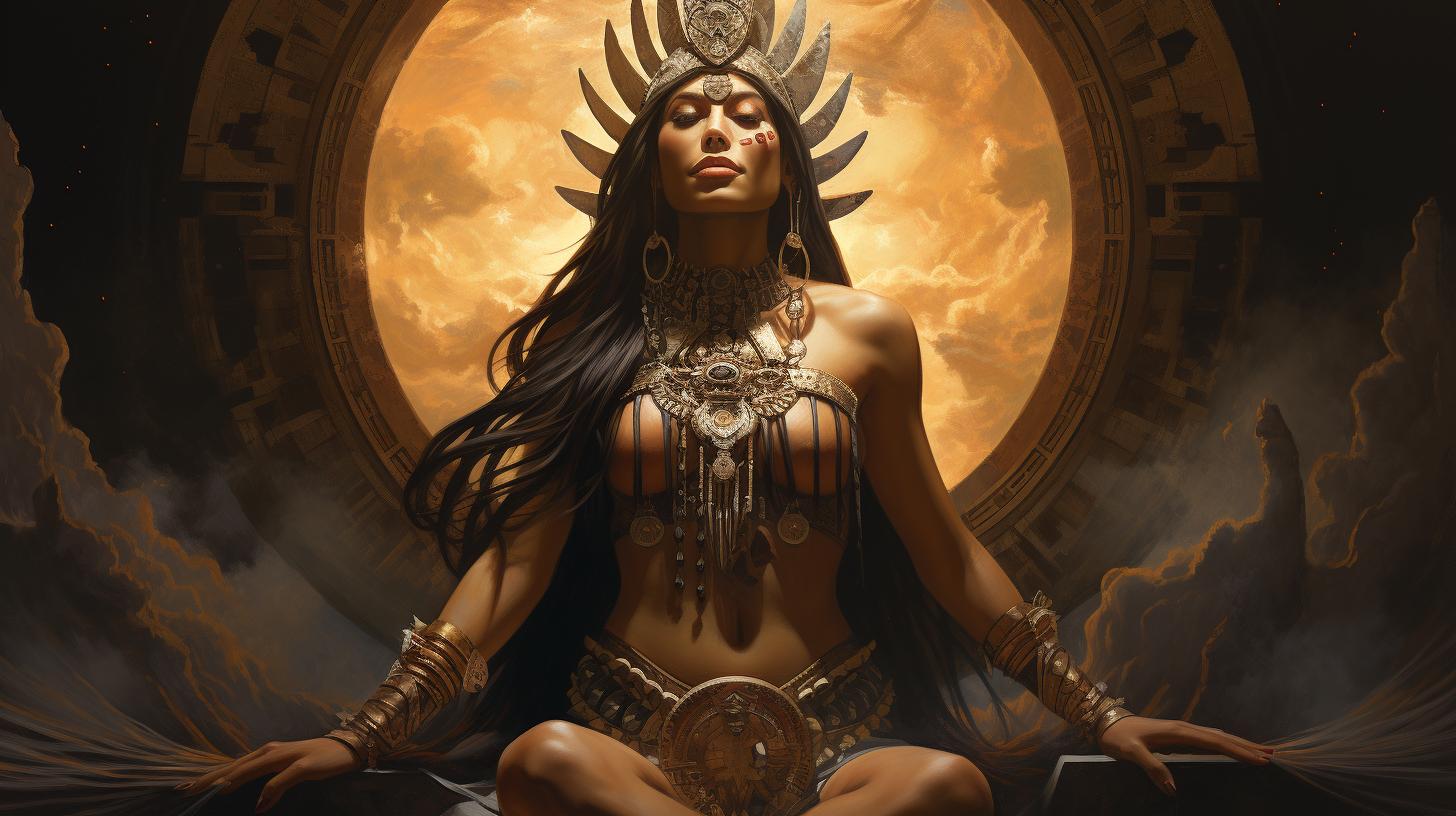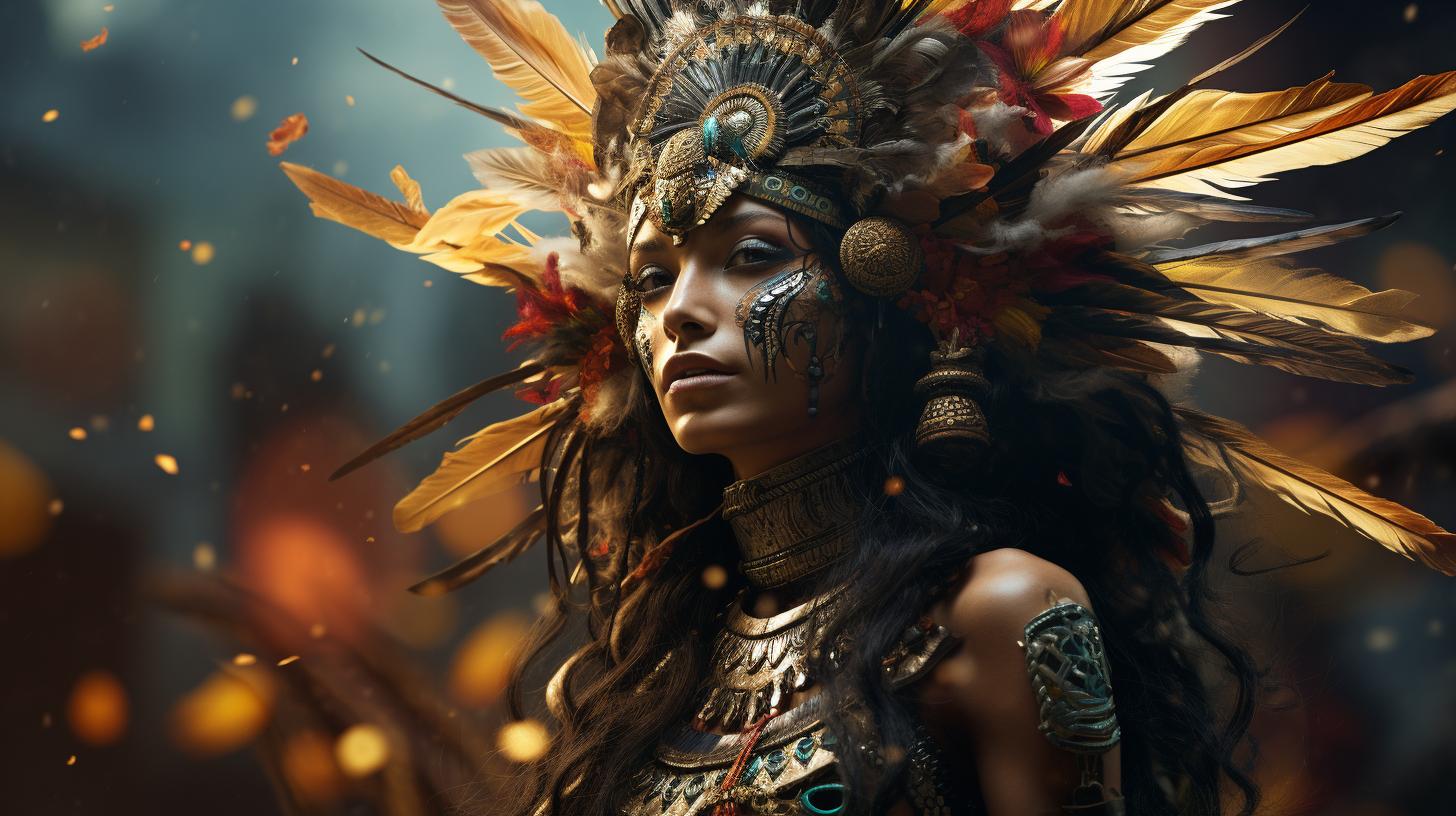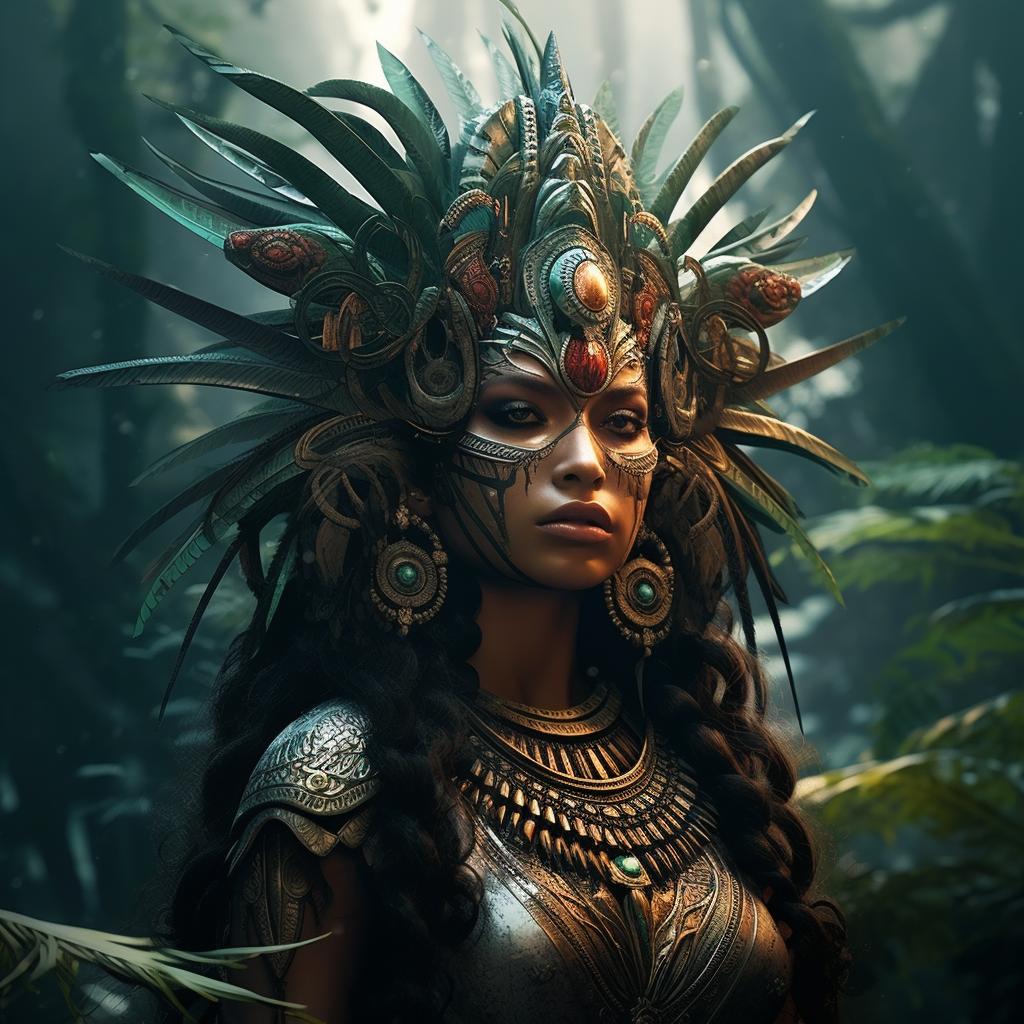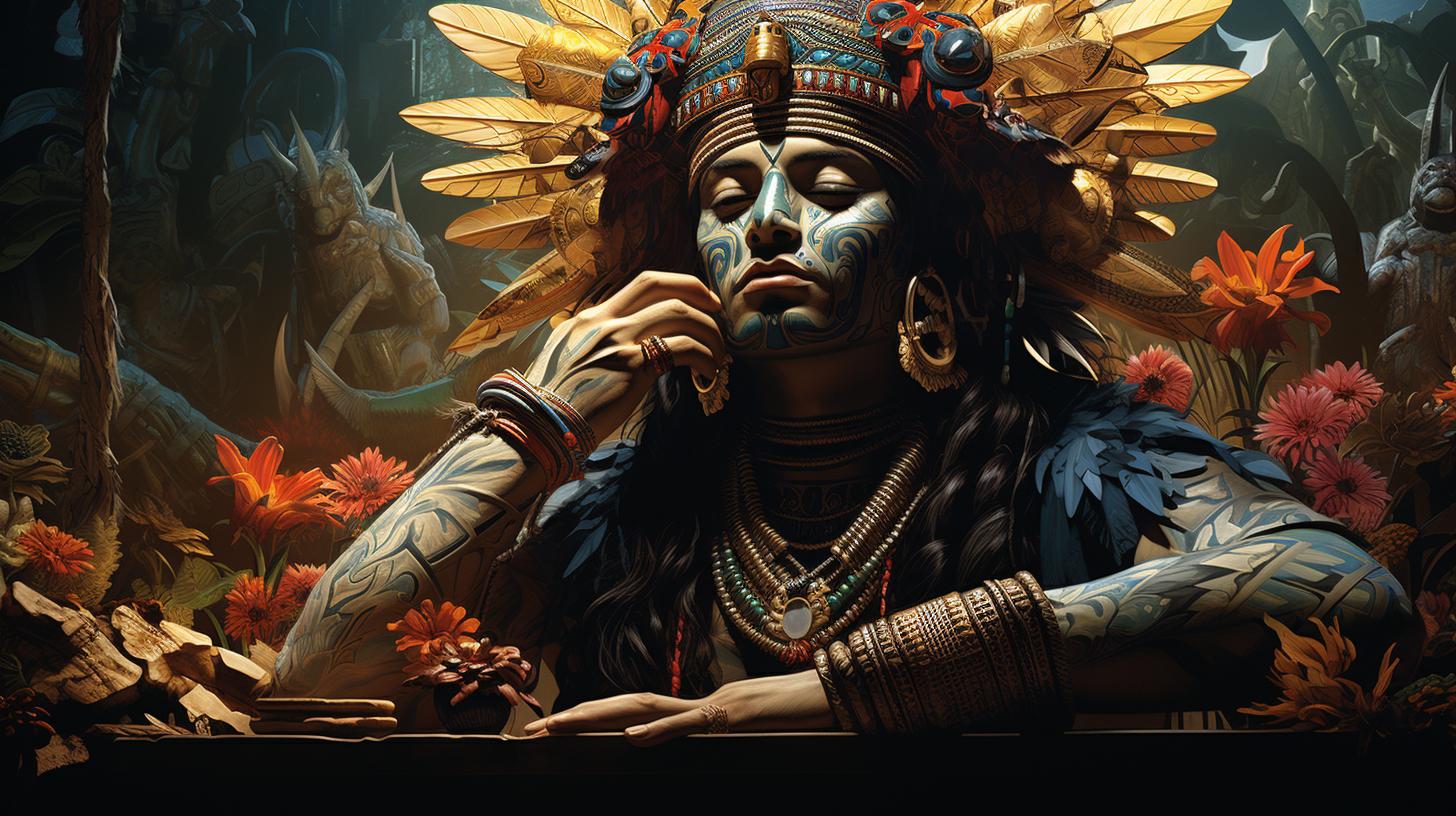Aztec God Xiuhtecuhtli: Exploring the Ancient Deity from Aztec Civilizations
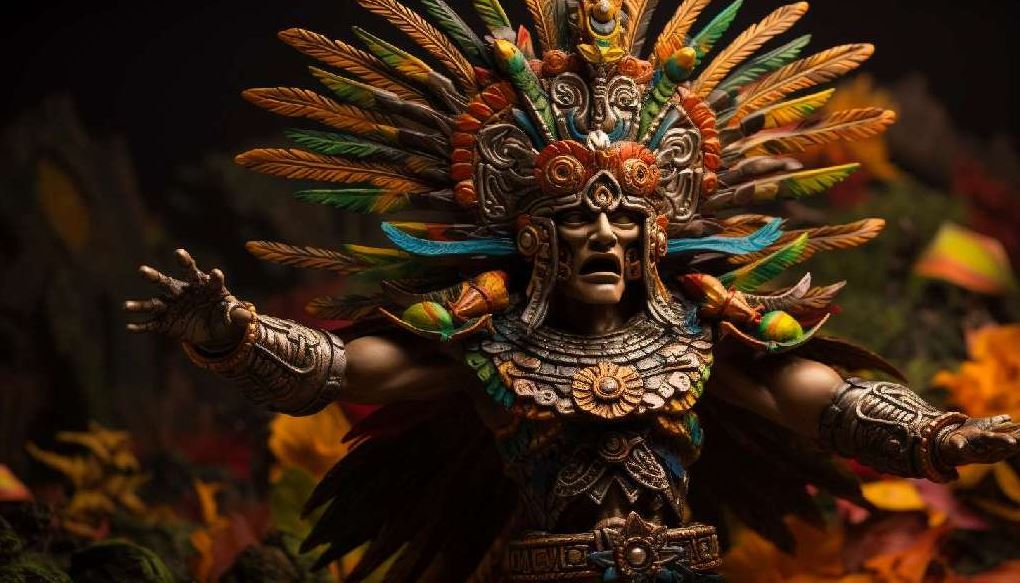
Xiuhtecuhtli, the Aztec god, holds a significant place in the mythology and culture of ancient Aztec civilizations. Worshiped in elaborate ceremonies and festivals, Xiuhtecuhtli symbolized fire, warmth, and life. As a patron deity, Xiuhtecuhtli played a crucial role in Aztec cosmology, representing the eternal cycle of creation and destruction.
This exploration delves into the origins, characteristics, and symbolism of Xiuhtecuhtli, shedding light on his importance in Aztec society and his enduring legacy in contemporary indigenous Mexican culture. Join us on this journey to uncover the mysteries of the Aztec god, Xiuhtecuhtli.
Exploring the Origins and Mythology of Xiuhtecuhtli
Delving into the rich history of the Aztec god Xiuhtecuhtli unveils a fascinating world of mythology and ancient beliefs. This section aims to shed light on the origins and significance of Xiuhtecuhtli in the Aztec civilization, exploring both the historical context of his worship and his role within the Aztec cosmology.
Historical Context of Xiuhtecuhtli Worship
The worship of Xiuhtecuhtli held great importance in the everyday lives of the Aztec people. Understanding the historical context of his worship helps us grasp the deep-rooted connection between Xiuhtecuhtli and the Aztec society.
During the height of the Aztec Empire, Xiuhtecuhtli’s veneration was intertwined with the religious practices and rituals of the Mesoamerican civilizations. His worship played a crucial role in maintaining the cosmic balance and ensuring prosperity for the Aztec community.
Through ceremonies and offerings, the Aztecs sought to appease Xiuhtecuhtli and gain his favor.
Elaborate temples dedicated to Xiuhtecuhtli were constructed, serving as sacred spaces where the Aztecs could connect with the divine. These architectural marvels, adorned with intricate carvings and sculptures, represented the spiritual importance placed on Xiuhtecuhtli.
The Role of Xiuhtecuhtli in Aztec Cosmology
Within the Aztec cosmology, Xiuhtecuhtli held a central position as the deity associated with fire and heat. He was believed to reside at the center of the universe, controlling the cycles of creation, destruction, and rebirth.
Seen as the personification of celestial fire, Xiuhtecuhtli symbolized the energy and transformative power of the sun. The Aztecs attributed the continuous cycle of life and death to his influence, recognizing his role as a source of both destruction and renewal.
The Aztecs believed that Xiuhtecuhtli’s blessings were necessary for a bountiful harvest and the well-being of their society.
This exploration into the origins and mythology of Xiuhtecuhtli provides a glimpse into the complex belief system surrounding this Aztec deity. By understanding the historical context of his worship and his role within Aztec cosmology, we can gain a deeper appreciation for the significance of Xiuhtecuhtli in the ancient Aztec civilization.
Xiuhtecuhtli’s Characteristics and Symbolism
The deity Xiuhtecuhtli, an integral figure in Aztec mythology, possesses a rich array of characteristics and symbolism that offer profound insights into the Aztec worldview. This section delves into the depictions and representations of Xiuhtecuhtli and explores the associated symbols and attributes associated with this revered god.
Depictions and Representations of Xiuhtecuhtli
Xiuhtecuhtli is often portrayed as a mature figure with a prominent and elaborate feathered headdress, symbolizing his association with the celestial realm. In some depictions, he is depicted with a red-colored face, representing fire and the transformative power of heat.
His eyes, often rendered in a fiery hue, exude an intense energy befitting the god of fire.
Artistic renditions of Xiuhtecuhtli frequently feature him donning a mixture of ceremonial ornaments, such as a pectoral piece and bracelets, often adorned with precious stones and feathers. These embellishments emphasize his divine status and his link to wealth, abundance, and prosperity in Aztec culture.
Associated Symbols and Attributes of Xiuhtecuhtli
Xiuhtecuhtli is closely associated with several symbols and attributes that deepen our understanding of his significance. Among these symbols is a sacred brazier, known as a xiuh-ocelotl, which serves as the vessel for his ever-burning flame.
This flame symbolizes the life-giving force of fire and embodies the perpetual cycle of creation, transformation, and destruction.
Another important attribute linked to Xiuhtecuhtli is the representation of maize, a staple crop in Aztec society. This association highlights his role as a provider of sustenance and fertility, as well as his connection to agriculture and the nourishment of the Aztec people.
Additionally, Xiuhtecuhtli is often depicted carrying a shield adorned with the year signs of the Aztec calendar, emphasizing his association with time, cycles, and the divine order of the universe. This representation underscores his role as a cosmic deity and guardian of cosmic balance.
In summary, the characteristics and symbolism of Xiuhtecuhtli showcase his elevated status as a god of fire, abundance, and cosmic order. Through his depictions and associated symbols, he serves as a significant figure in the Aztec pantheon, embodying the fundamental principles and beliefs of the Aztec civilization.
Xiuhtecuhtli’s Importance in Aztec Ceremonies and Festivals
Xiuhtecuhtli, the Aztec god of fire and warmth, held immense significance in various ceremonies and festivals within Aztec culture. These ceremonial events were an integral part of Aztec religious practices, serving to honor and appease Xiuhtecuhtli, ensuring the preservation of life and the continuity of the cosmic order.
Let’s delve into two key aspects of Xiuhtecuhtli’s importance in Aztec ceremonies and festivals.
The New Fire Ceremony: Celebrating Xiuhtecuhtli
A prominent ritual closely associated with Xiuhtecuhtli was the New Fire Ceremony, known as the “Binding of the Years.” This highly anticipated event, held once every 52 years, marked the end of a complete cycle and the beginning of a new era.
It was a momentous occasion where the sacred fire was extinguished throughout the Aztec empire, symbolizing the end of the current era.
During the New Fire Ceremony, Aztec priests would gather at the main temple, meticulously monitoring the skies for the appearance of the constellation known as the Pleiades. Once the constellation was visible, it signaled the time to create a new sacred fire.
Priests would carefully produce sparks by drilling sticks into a wooden base, igniting the sacred fire anew.
This rekindled fire was distributed to various temples and households, with people relighting their hearths from it symbolizing the rejuvenation of life and the cosmic balance. The New Fire Ceremony represented the perpetual cycle of creation, destruction, and rebirth, with Xiuhtecuhtli playing a pivotal role at its core.
Other Festivals and Rituals Involving Xiuhtecuhtli
Besides the New Fire Ceremony, Xiuhtecuhtli was celebrated and revered in numerous other festivals and rituals. These events were held throughout the year to honor different aspects of Aztec life and cosmology.
- Xocotl Huetzi: This ceremony, also known as the “Feast of the Young Maize Ear,” marked the growth and maturity of maize. It celebrated the agricultural abundance facilitated by Xiuhtecuhtli’s influence, ensuring sustenance for the Aztec civilization.
- Tecuilhuitontli: This festival, known as the “Feast of the Divine Lords,” celebrated the gods responsible for various natural phenomena.
Xiuhtecuhtli, as the god of fire, played a prominent role in this festival, with elaborate offerings and solemn rituals dedicated to him.
- Panquetzaliztli: Held in honor of Huitzilopochtli, the patron god of the Mexica, Xiuhtecuhtli was also involved in this festival as a prominent deity within the Aztec pantheon.
It symbolized the arriving of winter and emphasized the cyclical nature of time.
Through these festivals and rituals, Aztec society expressed their reverence for Xiuhtecuhtli, acknowledging his essential role in their lives and the wider cosmic order.
His significance extended beyond the ceremonial aspects, permeating all aspects of Aztec culture and encapsulating the interwoven connection between religion, nature, and everyday existence.
Xiuhtecuhtli’s Significance in Aztec Society and Culture
Xiuhtecuhtli held a prominent position in Aztec society and culture, playing a vital role as a patron deity. Let’s delve into the various aspects that highlight the significance of Xiuhtecuhtli in shaping the Aztec civilization.
Xiuhtecuhtli as a Patron Deity
As a patron deity, Xiuhtecuhtli presided over crucial aspects of Aztec life, including agriculture, fertility, and the calendar. He was believed to be the source of vitality and the driving force behind the cyclical nature of existence.
The Aztecs revered him as the provider of life-sustaining fire and warmth, essential for the growth of crops and the well-being of the community.
Xiuhtecuhtli’s association with fire also symbolized purification and rejuvenation. To honor him, the Aztecs performed elaborate rituals and sacrifices, often involving the establishment of new fires. These ceremonies aimed to restore balance and harmony within the Aztec society, ensuring the continuation of life and prosperity.
Xiuhtecuhtli’s Influence on Art, Symbolism, and Architecture
Xiuhtecuhtli’s significance reverberates through the artistic representations, symbolism, and architectural marvels of the Aztec civilization. His distinctive attributes, such as a turban adorned with feathers and a face adorned with red and yellow colors, became iconic symbols associated with his presence.
Depictions of Xiuhtecuhtli can be found in various forms of Aztec art, including pottery, murals, and sculptures. These artistic representations often emphasized his role as the bringer of warmth, with flames and fire motifs adorning his images.
The magnificence of Xiuhtecuhtli’s artistry can be witnessed in the grandeur of structures such as the Templo Mayor, where his statue was enshrined, signifying his pivotal role in Aztec spiritual and ceremonial life.
Symbolism and Meaning
- Fire: Represents creativity, transformation, and the divine energy that sustains life.
- Turban with feathers: Symbolizes Xiuhtecuhtli’s connection to the heavenly realms and his authority as a deity.
- Red and yellow colors: Signify the radiance and warmth associated with fire and Xiuhtecuhtli’s life-giving energy.
These artistic representations and symbols not only celebrated Xiuhtecuhtli but also served as a reminder of the Aztecs’ deep reverence for the cycles of life and the divine forces that governed their existence.
Legacy and Modern Understanding of Xiuhtecuhtli
Legacy and modern understanding of Xiuhtecuhtli, the Aztec god, continue to thrive in indigenous Mexican culture today. The significance of Xiuhtecuhtli extends beyond ancient times, influencing various aspects of contemporary society.
This section explores the enduring legacy of Xiuhtecuhtli, examining his impact on indigenous Mexican culture and his presence in current research and exploration.
Influence on Indigenous Mexican Culture Today
Xiuhtecuhtli’s influence can be seen in numerous aspects of indigenous Mexican culture. His symbolism of fire and warmth remains deeply ingrained in traditional rituals and ceremonies. Xiuhtecuhtli is revered by indigenous communities as a deity associated with life, fertility, and the sacred essence of fire.
His presence is felt during important cultural events, such as harvest festivals and spiritual gatherings.
Moreover, the significance of Xiuhtecuhtli can be observed in the preservation of Aztec traditions and beliefs. Many indigenous Mexican communities continue to honor Xiuhtecuhtli through artistic expressions, dance performances, and oral traditions that depict his mythological stories.
His representation serves as a vital link to their ancestral heritage, fostering a sense of cultural identity and connection to their roots.
Xiuhtecuhtli in Contemporary Research and Exploration
The exploration and understanding of Xiuhtecuhtli continue to captivate researchers and scholars in the modern era. Archaeological excavations and ongoing studies enable deeper insights into the significance of Xiuhtecuhtli in Aztec society.
Through these endeavors, researchers aim to decipher the multifaceted roles of Xiuhtecuhtli, not only as a patron deity but also as a cultural symbol that reflects the Aztec worldview.
Furthermore, contemporary research delves into the cultural, religious, and societal impact of Xiuhtecuhtli on indigenous communities today. The examination of Xiuhtecuhtli’s legacy allows for a better understanding of the Aztec civilization and its enduring influence on Mexican culture.
By exploring artifacts, ancient texts, and oral histories, researchers strive to reconstruct a comprehensive picture of Xiuhtecuhtli and his role in shaping Mexican identity.
In conclusion, Xiuhtecuhtli’s legacy continues to thrive in indigenous Mexican culture, impacting various aspects of contemporary society. Recognizing his influence on cultural expressions and ongoing research is crucial for preserving the ancient Aztec traditions and understanding their significance in a modern context.
..











